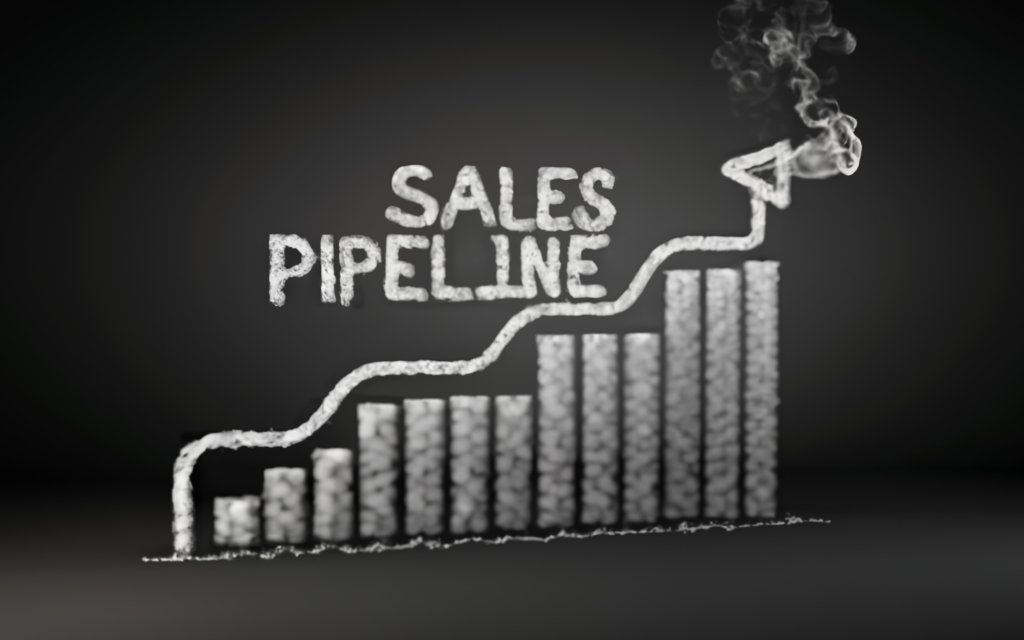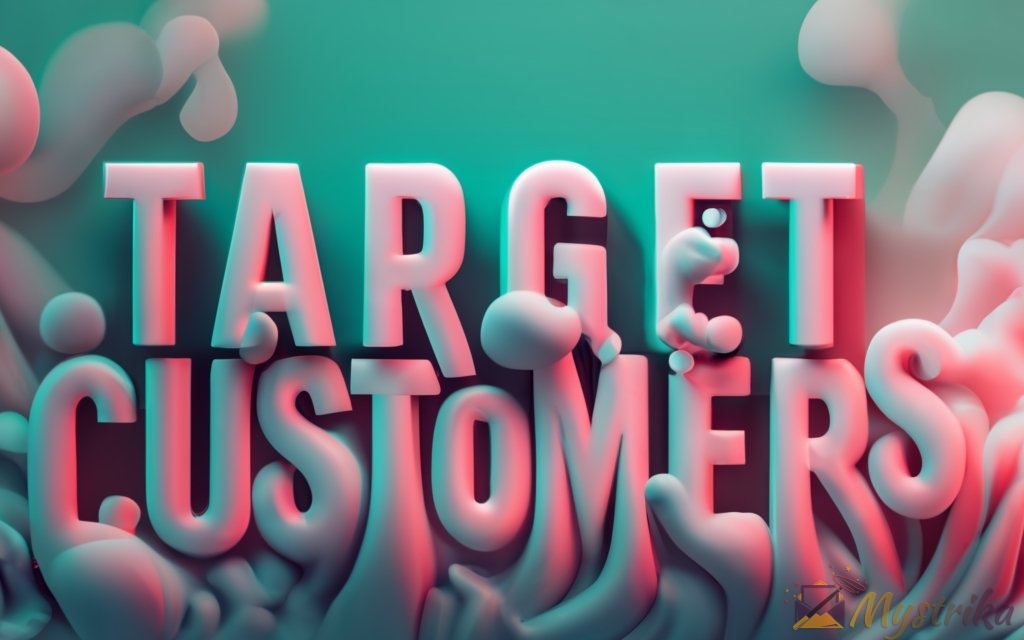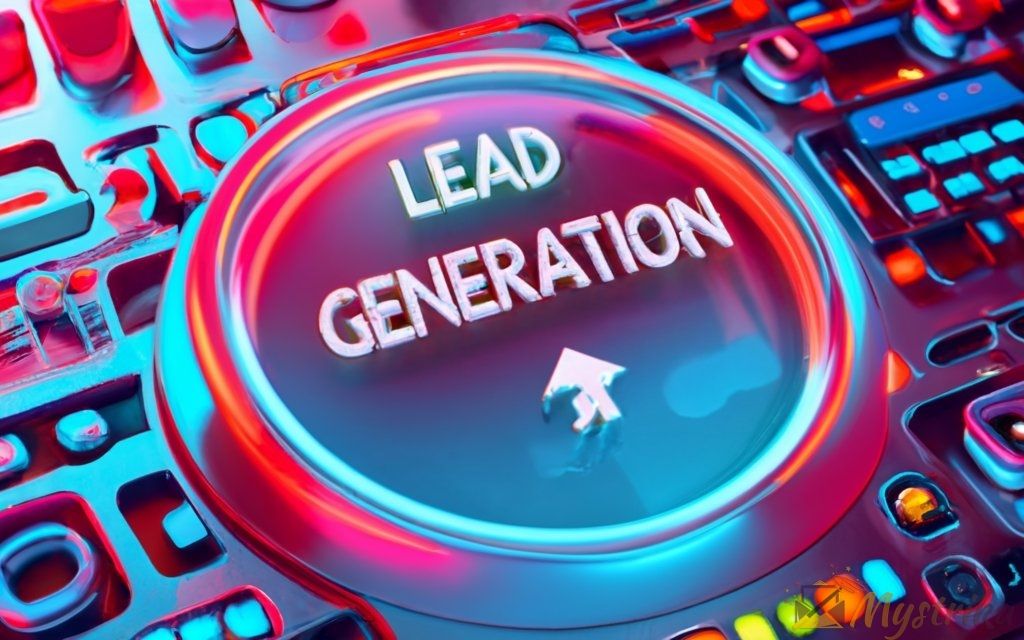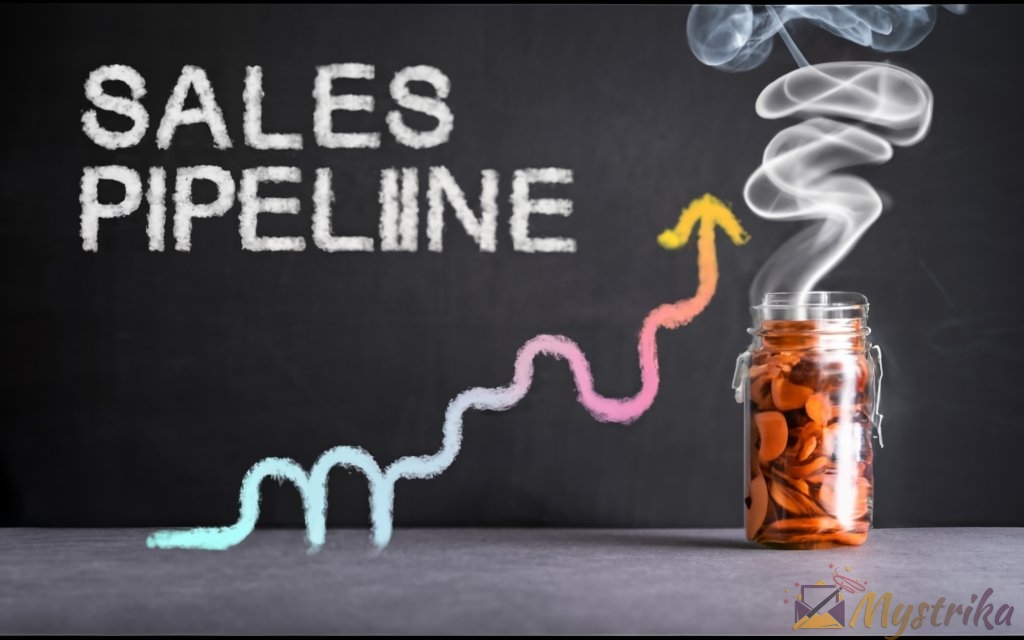Is your sales pipeline leaking revenue? Follow these proven methods to seal the cracks and supercharge your sales engine.
Building an efficient sales pipeline is a pillar of sustainable growth. But without vigilant optimization, deals stagnate and forecasts run dry. Don’t leave revenue on the table due to pipeline friction. Take control with data-driven insights, enhanced workflow, and continual refinements. Regain the visibility and productivity needed to accelerate conversions and consistently hit goals.
A robust sales pipeline is the lifeblood of any successful sales organization. But what exactly is a sales pipeline, and why does it matter so much to your bottom line? Let’s start by getting clear on fundamentals.
Defining a Sales Pipeline
In simple terms, a sales pipeline tracks potential customers through the stages of considering, evaluating, and purchasing your products or services. It provides a visual representation of all your sales opportunities at every phase—from initial interest to closed deal.
A pipeline shows the volume of prospects being generated, the likelihood of them converting, and the projected revenue value each represents. More advanced pipelines track granular metrics like sales stage duration, win probability, and projected close dates.
Every company’s sales pipeline stages are slightly different, but most contain the core stages below:
- Lead – Unqualified prospects found through marketing efforts
- Marketing Qualified Lead (MQL) – Prospects that engage with content and meet set criteria
- Sales Qualified Lead (SQL) – Prospects that sales deems viable and ready to contact
- Opportunity – Prospects formally moving into the sales process
- Closed/Won – Deals that successfully reached a purchase decision
- Closed/Lost – Opportunities that failed to convert
Additional stages like discovery, proposal, negotiation, and customer renewal expand this framework. But these core stages offer a simplified view of the pipeline’s function—moving prospects from early interest to satisfied customers.
Sales Funnel vs. Pipeline
The sales pipeline is often confused with the sales funnel, though they serve different purposes. The sales funnel represents the buyer’s journey and mindset as they move from awareness to consideration, evaluation, and ultimately purchase. It’s about understanding your customer’s experience.
The sales pipeline is all about your processes and performance. It focuses on managing the sales flow from your company’s perspective—tracking prospect movement, sales productivity, forecasting, and more. This internal view of opportunities enhances the visibility you need to hit goals.
To summarize:
- Sales funnel: Buyer journey stages
- Sales pipeline: Company sales process stages
While distinct, these two frameworks are interconnected. Aligning your sales pipeline flow to the typical sales funnel journey converts more prospects.
Why Pipeline Management Matters
Effectively managing your sales pipeline provides vital visibility that helps your business in multiple ways:
- Identifies areas for improvement – Analytics from each pipeline stage spotlight bottlenecks, ineffective tactics, and other issues impeding sales. This awareness enables data-driven optimization.
- Informs accurate forecasts – Understanding expected revenue tied to each stage allows more precise forecasting to plan budgets and operations.
- Allocates resources efficiently – Pipeline data helps determine appropriate sales staffing, bonuses, territories, and other resourcing to maximize results.
- Motivates sales staff – Pipeline visibility encourages healthy competition and allows customized coaching for sales reps based on performance.
- Demonstrates sales effectiveness – Quantifiable pipeline metrics showcase the productivity of sales initiatives and strategies to leadership.
- Enables effective hand-offs – Shared pipeline visibility smooths the transition between marketing, sales development, account executives, and other teams.
Essentially, vigilant pipeline management grants the actionable insights needed to continually optimize processes and boost productivity. It prevents sales opportunities from falling through the cracks so revenue keeps flowing.
Without clear visibility and tracking of every opportunity, deals stall, fall out of sync with the buyer’s timeline, or fail to get proper attention. Maintaining an organized, up-to-date pipeline is crucial for achieving sales goals and gaining a competitive advantage.
When evaluating sales pipeline software and tools, be sure they provide key features like:
- Customized sales stages and probability scoring
- Segmentation of contacts, accounts, territories
- Automated lead routing and alerts
- Real-time progress dashboard
- Role-based access and visibility
- Sales productivity tracking and reports
- Integration with other sales tools
Leveraging solutions like Mystrika gives organizations enhanced control, insights, and automation capabilities to master pipeline management.
In summary, a well-defined sales pipeline provides the visibility needed to analyze performance, identify improvement areas, demonstrate productivity, and ultimately drive higher conversions. Succeeding in today’s competitive landscape requires establishing and vigilantly managing an optimized pipeline tailored to your sales process and customer journey.
Constructing an optimized sales pipeline tailored to your business requires strategic planning and preparation. Follow these steps to set up a pipeline framework that captures more opportunities and drives higher conversions.

Identify Your Target Customers
Defining your ideal customer profile (ICP) is an essential first step in building an effective pipeline. Your ICP outlines the key attributes of your best-fit prospects, including:
- Firmographics – Industry, company size, location, revenue range, etc.
- Buyer persona – Roles, responsibilities, pain points, and motivations.
- Behavioral – Online activity, content interests, engagement metrics.
- Technographics – Stack, workflows, tools used.
Take time to research and analyze your current customers to map out detailed ICPs. Also leverage third-party data sources to supplement insights into your total addressable market.
Having clearly defined ICPs allows you to:
- Create targeted content and campaigns
- Route inbound leads appropriately
- Focus outbound prospecting for better ROI
- Identify decision-makers and influencers
- Craft messaging that resonates
- Set qualification criteria to filter prospects
- Gauge deal size potential from accounts
Regularly updating your ICP framework ensures alignment as needs shift over time. Detailed buyer knowledge is fundamental to pipe generation and guides the rest of your pipeline setup.
Map Out the Buyer’s Journey
While the sales pipeline represents your processes, it must sync with the typical customer journey to convert effectively. Mapping the full end-to-end buyer experience within your deal cycle enables creating a tailored pipeline flow.
Key steps in any B2B buying journey include:
Problem Awareness
- Recognizing need or desire for a solution
- Conducting initial research on options
- Experiencing a specific pain point or event
Research and Comparison
- Self-education through content consumption
- Identification of potential alternative vendors
- Comparing products, services, pricing
Decision-Making
- Seeking validation through demos, trials, references
- Receiving buy-in from decision-making group
- Evaluating ROI potential from options
Purchase
- Receiving final pitch and contract for signature
- Securing budget approvals from management
- Signing agreement and completing purchase
Post-Sale
- Onboarding onto solution or receiving implementation services
- Getting training on product usage
- Providing user adoption feedback and reviews
Within this framework, determine the typical timelines, key milestones, and conversion probabilities for your customer base. Then shape pipeline stages and transition criteria to match.
Journeys vary across industries, deal sizes, products, and individuals. Develop generalized personas and sequences while allowing customization as needed per opportunity. The goal is mirroring their path, not forcing prospects into rigid conventions.
Establish Pipeline Stages and Metrics
Having mapped the customer experience, you can now build out structured pipeline stages that align to their progression. Clearly defining each stage sets expectations, enables accurate measurement, and informs data-driven decisions.
Typical stages include:
Lead – Unqualified prospects from inbound and outbound efforts
Marketing Qualified Lead (MQL) – Prospects meeting defined lead criteria
Sales Qualified Lead (SQL) – Sales-vetted prospects ready for full pursuit
Opportunity – Active sales engagement underway
Customer – Closed deal and migrated to customer success
For each stage, establish:
- Transition criteria – Actions or metrics that move prospects forward
- Conversion rates – Historical percentages that advance from stage
- Timeframes – Average time spent and cadence in each stage
- Win probability – Likelihood of closing based on past performance
- Value – Projected deal size or revenue amount
Track these figures over time to spot trends and optimize as needed. Also set up dashboards and reports for visibility into performance. Maintain consistency in metrics across marketing, sales, and leadership.
Advanced frameworks can have 10+ finely mapped stages. The key is segmentation that provides meaningful visibility while avoiding overly complex frameworks.
Integrate Your Sales Process
An effective pipeline resembles a well-oiled machine, with seamless transitions between stages. Take time to examine your current sales workflow and processes to identify gaps or bottlenecks in the pipeline flow.
Key aspects to evaluate include:
- Lead qualification – Are you efficiently identifying and scoring inbound prospects?
- Lead nurturing – Does your content strategy move prospects forward?
- Appointment setting – Can you consistently schedule initial meetings?
- Discovery – Are you uncovering stakeholders, needs, and timelines?
- Sales methodology – Is your approach aligned to buyer journeys?
- Proposal process – Can you deliver quotes quickly and professionally?
- Contract finalization – Is your legal team responsive to close deals swiftly? Look at your sales technology stack along with inner processes and teams. Implement solutions like Mystrika to enhance workflows with automation and intelligence. The goal is seamlessly transitioning prospects from one stage to the next per the mapped timeline.
Make sure hand-offs between sales development, account executives, and other functions are smooth. Break down silos between teams and unify around shared pipeline goals.
Implement Enabling Technology
The right sales tools and software establish the infrastructure for scalable pipeline management. Here are some key solutions to implement:
CRM System
A CRM centralizes prospect data and interactions while enabling pipeline tracking and analytics. It provides the single source of truth for forecasting, reporting, and measuring sales effectiveness.
Marketing Automation
Automation nurtures prospects by delivering personalized content at scale. It facilitates lead scoring and qualification too.
Sales Engagement
Sales engagement platforms help agents connect with buyers via calls, email, SMS, and social media messaging. They optimize outreach cadence and sequences.
Attribution Tracking
Understanding lead sources highlights the campaigns and channels driving pipeline. Attribution modeling quantifies marketing ROI.
Data Enrichment
Augmenting contacts and accounts with firmographic and technographic data enables more relevant messaging.
Sales Intelligence
Competitive intelligence helps sales teams tailor pitches while insightful prospect alerts create new opportunities.
Performance Analytics
Advanced reporting visualizes granular performance data, trends, and forecasts to inform executive decisions.
Implementing the right mix of solutions provides sales teams with the enabling technology to optimize efforts. Ensure your stack integrates smoothly to unify data and workflows.
With foundations like accurate ICPs, mapped buyer journeys, and integrated technology in place, you can start reaping the benefits of enhanced pipeline visibility and control. Keep these elements aligned as you scale for even greater efficiency.
Ultimately, the right sales pipeline framework captures every opportunity, accelerates conversion, and drives predictable revenue. Using the steps above lays the groundwork for pipelines that fuel growth. Revisit and refine periodically as needs evolve.
With robust processes and tools in place to move prospects consistently through each milestone, your sales organization will operate like a well-oiled revenue machine.
With your foundational pipeline framework constructed, the next imperative is filling it with high-quality opportunities. Employ these proven strategies to continually feed prospects into your pipeline and accelerate their path to purchase.

Refine Your Lead Generation Process
The top of your pipeline relies on consistent lead generation to capture new opportunities. Take time to optimize inbound and outbound prospecting activities using data-driven insights and a customer-centric approach.
Analyze Campaign Performance
Which lead sources, assets, and channels drive the highest return? Attribution modeling quantifies marketing performance to spotlight what’s working and what to adjust. Track key metrics like:
- Lead quality score
- Sales qualified lead (SQL) conversion rate
- Sales cycle length
- Win rate
- Lifetime value
Look at both first touch and full funnel attribution to understand interactions leading to conversion. Refine strategies around your best-performing initiatives.
Score Leads
Route hot prospects faster by scoring inbound inquiries on criteria like:
- Firmographic fit
- Persona alignment
- Content engagement
- Form completion
- Web activity
With your sales pipeline established, ongoing maintenance and optimization is crucial for sustaining success. Consistently monitoring performance, regularly cleaning data, and leveraging analytics enables continual improvement.
Implement these best practices to keep your pipeline flowing smoothly:
Conduct Regular Pipeline Reviews
Schedule recurring pipeline review meetings with sales leaders and representatives to evaluate opportunities collectively. Consistent sessions build engagement and accountability while providing a cadence to address issues quickly.
Aim to cover:
- Overall pipeline health – Volume, value, conversions, velocity, ratios
- Stage progression – Conversion rates, win probability, forecast by stage
- Sales rep performance – Individual productivity, strengths, areas for improvement
- ** Lead quality** – Scoring trends, nurturing impact, net new by source
- Deal trends – Win/loss analysis, cycle times, competitive landscape
- Forecasting accuracy – Actuals vs. projections, variance analysis
- Process bottlenecks – Discovery findings, inefficient handoffs, sticking points
- Tool issues – Technology problems impeding productivity
- Training needs – Skills gaps impeding effectiveness
- Coaching opportunities – Aligning seller activities to pipeline needs
Leave time to brainstorm and implement solutions to the priorities uncovered. Also recognize achievements and wins uncovered in the data.
Avoid information overload by focusing each session on key metrics, trends, and takeaways. The cadence can range from daily standups to weekly reviews to monthly business reviews per preferences.
Pro Tip: Schedule pipeline reviews shortly before forecasting sessions to uncover latest insights.
Use Analytics to Identify Bottlenecks
Data illuminates what’s working as well as pain points. Analyzing pipeline metrics empowers you to address problem areas through:
Conversion Rate Analysis
Compare stage conversion rates to goals. Low rates signal ineffective nurturing or outreach. Review messaging, content, and sales interactions to diagnose and resolve issues.
Sales Cycle Analysis
Long sales cycles drag down pipeline velocity. Assess cycle times by rep, product, account, etc. to pinpoint causes. Analyze sales behaviors in lengthy deals to identify improvements.
Win/Loss Analysis
Understand why you win or lose deals through buyer surveys and rep debriefs. Adjust strategy and positioning accordingly.
Lead Source Analysis
Determine the channels generating the most pipeline value. Double down on high-ROI sources and pare back lower-tier ones.
Lead Quality Analysis
Assess lead quality trends over time. Poor quality signals inefficient prospecting or qualification processes needing optimization.
Sales Team Analysis
Compare individual rep performance. Low producers may require additional coaching or training to hit activity quotas.
Forecast Variance Analysis
Consistent variances highlight inaccurate projections. Refine forecasting methodology, improve data quality, or adjust quotas.
Advanced analytics reveals operational insights to keep your pipeline flowing efficiently. Tap into the wealth of data at your disposal.
Keep Pipelines Updated in Real-Time
Stale or outdated pipeline data severely limits visibility and impacts forecasting, productivity tracking, and more. Make keeping opportunities updated in your CRM a top priority.
- Set policies – Implement guidelines for notes, stage/probability updates, and renewal tracking.
- Automate workflows – Trigger actions like email alerts for stuck deals or overdue steps.
- Integrate tools – Unify marketing, sales, and productivity data in your CRM.
- Conduct audits – Regularly review pipeline hygiene and contact non-responsive prospects.
- Enforce discipline – Reiterate expectations for timely pipeline updates during coaching.
Pro Tip: Gamify pipeline updates by making it a team competition or rewarding top performers.
Real-time accuracy ensures you can make informed decisions and track true performance. Don’t let deals stagnate.
Clean Out Stale Leads Regularly
On the flip side, overstuffed pipelines with dead or unqualified leads obscure visibility into real opportunities.
Schedule recurring lead list cleanups to filter out:
- Ice-cold leads with no recent activity
- Unfit prospects that do not match ICPs
- Leads with bad contact data
- Closed/lost opportunities from months past
Also consider:
- Auto-archiving old closed deals to streamline lists
- Adding open deal expiration dates that trigger reviews
- Segmenting active vs. passive prospects
- Converting leads to marketing nurture tracks after periods of inactivity
Pro Tip: When re-engaging old leads, use phrases like “Haven’t heard from you in a while…” or “Circling back…” to restart conversations.
Regular pruning keeps pipelines focused on active opportunities with the highest potential.
Track Conversion Rates by Stage
Understanding conversion ratios for each pipeline stage highlights areas for improvement. Measuring metrics like:
- SQLs/Leads
- Opportunities/SQLs
- Won Deals/Opportunities
- Renewals/Won Deals
…shows where prospects are falling out of the pipeline. Set performance goals and monitor trends over time. Low or declining conversion signals problems setting appointments, ineffective nurturing, poor qualification, etc. depending on where drops occur.
Diagnoosing poor conversion ratios directs training and coaching efforts to resolve leaks in the pipeline. Regularly assess these benchmarks to meet revenue goals.
Adjust Processes Based on Performance Data
The best pipelines are dynamic, not static. Continuously refine strategies based on real data and results.
When insights surface from pipeline reviews, actually implement changes. This can mean:
- Optimizing ineffective nurture tracks
- Trying new outreach cadences to boost meetings booked
- Refining DQ criteria to improve SQL quality
- Updating content offers if downloads aren’t converting
- Realigning sales territories or expanding the team
- Switching tools or systems not delivering ROI
Be willing to test changes, measure the impact, and double down on what works. Use data to guide enhancements over time.
By regularly inspecting pipeline health from all angles and adjusting as needed, you sustain a smooth flow. Ongoing fine-tuning balances leading indicators (meetings set, nurture stats) and lagging indicators (win/loss, cycle times) to optimize the entire framework.
Make time for pipeline strategy sessions, stay on top of hygiene, leverage analytics, and implement ideas uncovered. Keeping your sales pipeline tuned ensures predictable, growing revenue.
Leveraging the right technology provides the infrastructure for scalable pipeline management and informed selling. Here are some key solutions for monitoring and maximizing pipeline performance.

CRM Systems
A CRM (customer relationship management) system acts as the central hub for tracking and nurturing prospects while enabling data-driven decisions. It provides:
- Centralized database – Consolidates all prospect details and interactions in one place for convenience and visibility.
- Pipeline tracking – Visual sales stages showcase volume, conversion rates, and revenue projections.
- Lead management – Scores, qualifies, and routes prospects for efficient follow-up. Provides macros for quick logging.
- Interaction logging – Activity tracking and history provides context on relationships and conversations.
- Analytics – Dashboards, reports, and metrics quantify pipeline/sales effectiveness.
- Forecasting – Modeling and projections based on the pipeline stages and probabilities.
- Attribution – Links prospects to campaigns and enables ROI measurement.
- Team collaboration – Commenting, file sharing, and task assignment keeps everyone aligned.
- Email integration – Email, calendar, and other tools unify data into the CRM.
- Mobility – Mobile access enables pipeline management from anywhere.
Popular CRM options like Salesforce, HubSpot, and Zoho all offer robust pipeline functionality. Just be sure to keep data updated for optimal value.
Sales Intelligence Platforms
Sales intelligence gives inside information to help teams message prospects effectively. These AI-powered solutions provide:
- Firmographic data – Enriches accounts with employee counts, revenue, locations, and more.
- Technographic data – Reveals technology stacks to inform product positioning.
- Org charts – Maps decision-makers and influencers within accounts.
- Trigger events – Alerts for leadership changes, new funding, patent awards, etc. that signal opportunities.
- Persona intelligence – Insights on responsibilities, preferences, and goals of individual contacts.
- Competitive intelligence – Details on incumbent solutions being used and what they lack.
- Ideal next actions – Recommends relevant messaging and plays tailored to the prospect.
Armed with intelligence, reps have informed conversations that progress opportunities. Options like Mystrika integrate directly into CRMs as well.
Attribution Modeling Software
Attribution modeling quantifies the impact of various lead sources on pipeline generation and revenue. Multi-touch analysis assigns credit across channels like:
- Paid search/display ads
- Organic search
- Social media
- Website visits
- Email campaigns
- Events
- Referrals
- And more…
Data shows the ROI of each marketing program and how prospects interacted with touchpoints over time. These insights guide optimal media mix and spend allocation. Popular tools include Bizible, LeanData, BrightFunnel, and Attribution.
Lead Scoring and Routing
Lead scoring uses prospect engagement metrics and traits to assign priority for sales follow-up. Automated routing instantly pushes hot inbound leads to the right reps or queues.
Typical criteria include:
- Page views
- Content downloads
- Form fills
- Email opens/clicks
- Website traffic source
- Match to ICPs
- Recency
- Lead source
Scoring and routing keeps prospects moving swiftly into outbound nurturing and conversations. Integration with marketing automation platforms and CRMs simplify implementation.
Communication and Automation Tools
Streamlining communications at scale fuels pipeline growth. Marketing automation platforms like HubSpot provide email and landing page templates, lead scoring, personalized nurturing tracks, and other capabilities.
Sales engagement tools like Outreach enable executing cadenced, multi-touch email and voice outreach campaigns to book more meetings. AI capabilities provide real-time guidance during calls as well.
Integrated platforms unite marketing and sales orchestration for maximum results. Solutions like Mystrika offer multiple capabilities like email sequencing, voicemail drops, and call/text routing in one.
Connecting technologies into an automated stack tailored to your workflows optimizes the lead-to-customer lifecycle. This removes friction, maximizes reach, and provides insights to refine efforts over time.
The Right Foundations for Growth
Leveraging platforms purpose-built for pipeline management, sales operations, and process enhancement provides the foundations for predictable revenue growth. Choose solutions that integrate and scale with your unique workflows.
With the right technology guiding your sales organization, you gain the visibility, efficiency, and control needed to continually improve. Pipeline analytics spotlight opportunities while process automation and intelligence accelerate conversions. Invest in the infrastructure to support your growth objectives now and well into the future.
An optimized sales pipeline is foundational to sustainable growth and achieving revenue targets. While setup and maintenance involves effort, the long-term gains are well worth the investment.
Let’s recap the key steps covered to establish an efficient pipeline framework:
Start With Your ICP and Buyer Journeys
Gaining intricate knowledge of your ideal customers and mapping their buying journey enables aligning your pipeline flow to their needs. Build detailed buyer personas and decision-making sequences.
Establish Structured Pipeline Stages
Clearly defined stages with transition criteria, conversion rates, timeframes, and win probabilities provide visibility into performance. Choose standard stages but customize as needed.
Set Up Supporting Processes and Tools
Evaluate current sales workflows and technology, identifying any gaps impeding conversions. Implement solutions like Mystrika that connect marketing and sales.
Maintain Real-Time Hygiene and Data Integrity
Stale pipelines misrepresent reality. Conduct regular audits and set policies to keep opportunities updated in real-time.
Monitor Pipeline Health and Conversion Rates
Set regular pipeline reviews to analyze health metrics, diagnose issues, and brainstorm improvements to test. Assess conversion ratios to improve lead velocity.
Leverage Analytics for Insights
Tap into your data wealth. Pipeline analytics spotlight conversion bottlenecks, effectiveness of initiatives, win probability trends and more to enhance efforts.
Implement Changes to Continually Optimize
Use insights uncovered to refine ineffective nurture tracks, realign territories, update messaging, expand capabilities, and implement other solutions. Turn insights into action.
Grow Your Pipeline With Enabling Technology
Leverage platforms purpose-built for sales operations, process enhancement, and pipeline visibility. Integrate solutions to unify data and scale efforts.
With a tailored pipeline framework fueled by real-time data and fine-tuned processes, your sales organization gains the predictability, productivity, and control needed to drive growth.
By aligning pipeline stages to the buyer journey, implementing supportive technology, maintaining fastidious data hygiene, and continually optimizing based on insights uncovered, your sales pipeline turns into a high-velocity revenue machine.
Make pipeline planning and performance optimization a priority in order to guide prospects seamlessly into satisfied, long-term customers. The clarity and efficiency gained allows your sales team to spend more time on high-value activities like relationship-building instead of administrative work.
While an effective pipeline provides lasting advantages, it does require vigilant care and feeding. Be sure to revisit these best practices regularly as your business needs evolve. Keep the pipeline engine tuned for maximized conversions, accurate forecasting, and sustained success.
With consistent monitoring and optimization, your sales pipeline provides the fuel to accelerate growth and gain a competitive edge. Put these steps into play to drive results and scale efficiently.
Here are the key takeaways for the full article:

Key Takeaways for Improving Your Sales Pipeline
- Clearly define your target customer profile (ICP) and map the typical buyer’s journey to align pipeline stages accordingly.
- Establish structured pipeline stages with transition criteria, timeframes, conversion rates, win probability, and value metrics.
- Set up efficient hand-offs, lead scoring methods, and tools like CRMs and sales intelligence to integrate processes.
- Maintain pipeline hygiene through real-time updates, audits of inactive leads, and regular cleansing of stale data.
- Conduct recurring pipeline reviews to analyze health, uncover bottlenecks, and brainstorm solutions to test.
- Leverage analytics for granular visibility into performance at each stage and make data-driven decisions.
- Use insights uncovered to continually refine ineffective elements of your pipeline and go-to-market strategies.
- Implement enabling technologies like attribution modeling, lead management, and sales automation tools that optimize pipeline velocity.
- Keep your sales pipeline framework dynamic, not static, by consistently inspecting metrics and fine-tuning processes over time.
Prioritizing pipeline strategies elevates revenue predictability, sales productivity, and forecast accuracy. By taking a vigilant, optimization-focused approach, your pipeline transforms into a high-velocity engine fueling sustainable growth.
Here are some frequently asked questions related to improving sales pipelines:
Frequently Asked Questions
What is a sales pipeline?
A sales pipeline is a visual representation of the stages a prospect goes through on their journey from initial interest to becoming a customer. It allows companies to track sales opportunities and funnel performance.
What are the key stages of a sales pipeline?
Typical stages include Prospecting, Lead Scoring, Marketing Qualified Lead, Sales Qualified Lead, Opportunity, Negotiation, Closed Won, and Closed Lost. However, pipelines can be customized with additional granularity as needed.
How is a sales pipeline different than a sales funnel?
The sales funnel refers to the customer journey, while the sales pipeline refers to a company’s internal sales process for guiding prospects through that journey. Funnels focus on the buyer, pipelines on the seller’s workflow.
Why is sales pipeline management important?
Effective pipeline management provides insights to identify improvements, forecast accurately, demonstrate productivity, and optimize resource allocation. It prevents deals from falling through the cracks.
How do you calculate the number of leads needed?
Take your revenue target and divide it by your average deal size to get the number of deals needed. Then divide that number by your average win rate or close ratio to determine the lead volume required.
What are some key performance metrics for sales pipelines?
Volume, conversion rates, velocity, win probability, value, cycle times, win/loss analysis, forecast accuracy, and lead source ROI are some examples of insightful pipeline metrics.
How can you optimize your sales pipeline?
Conduct recurring pipeline reviews, maintain clean data, leverage analytics, implement enabling technologies, continually refine processes, focus on lead quality, and align with the customer journey.
What tools help optimize pipeline management?
CRM systems, sales intelligence, attribution modeling, lead management, and sales automation tools provide the visibility and infrastructure needed for data-driven optimization.
How often should you review pipeline performance?
Ideally pipeline reviews should occur on a set recurring cadence, such as weekly or monthly. More frequent is better for staying on top of potential issues and opportunities.

